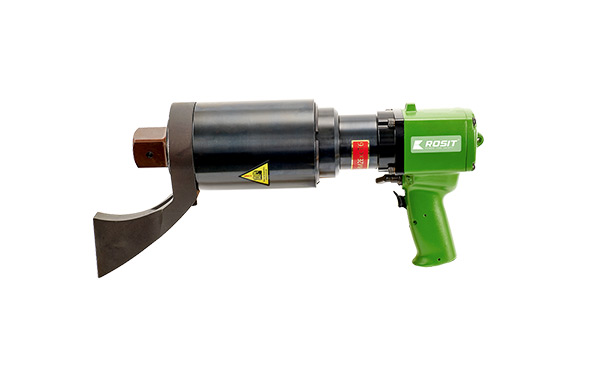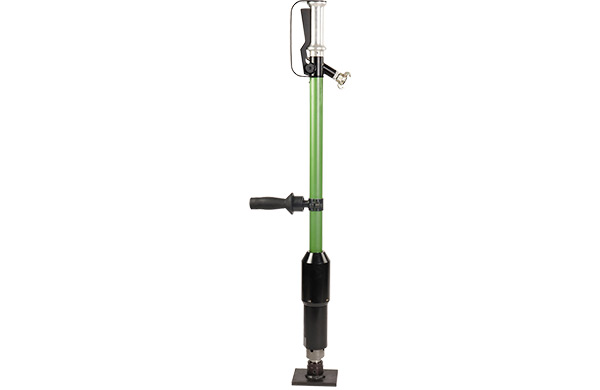- Power Tools
-

Saws
Chain Saw Concrete Chain Saw Band Saw Reciprocating Saw ...
-

Cutters
Pneumatic Cutter Pipe Cutting Machine Nut Cutter
-

Drills
Hammer Drill Pistol Hammer Drill Two Hand Operation Drill Column Drill ...
-

Impact Wrenches
Pneumatic Impact Wrench (Ex-proof Series) Pneumatic Impact Wrench (Ultra light Series) Emulsion Impact Wrench Nut Runner ...
-

Torque Wrenches
Pneumatic Torque Wrench Electric Torque Wrench Hydraulic Torque Wrench Hollow Hydraulic Wrench ...
-

Mining Waterjet Cutting Machine
Electric Mining Waterjet Cutting Machine Pneumatic Mining Waterjet Cutting Machine Emulsion Mining Waterjet Cutting Machine
-

Hammers
Pneumatic Chipping Hammer Hydraulic Chipping Hammer
-

Scaler
Pneumatic Long Reach Scaler
-

Rammer
Pneumatic Rammer
-

Grinders
Wet Grinder Angel Grinder Electric Grinder
-

Fan
Pneumatic Fan Heavy Fixed Fan
-

Hoist
Chain Hoist Electric Hoist Pneumatic Hoist Hydraulic Hoist ...
-

Winch
Pneumatic Winch
-

Pump
Pneumatic Submersible Pump Emulsion Submersible Pump
-

Assembly
Torque Multipler C-Hog Ring Plier
-
- Accessories
-

Cutting
Chainsaw Concrete Chainsaw Band Saw Reciprocating Saw ...
-

Drilling
Impact Drills Light Drills Magnetic Drills丨Rail Drills Balance Drills丨Angle Drills ...
-

Assembly
Impact Wrenches C-Hog Ring Plier
-

Hammer & Shovel
Chipping Hammer Derusting Shovel
-

Grinding
Grinders
-

Hydraulic Accessories
Nut Runner Cutter
-

General Accessories
Waterjet Cutting Machine Filter assy. Filter assy. Water Pump ...
-
- Company Profile
- Service
- News
-

Events
The 21st 2023 Taiyuan Coal (En The 17th Yulin International C The 20th TaiYuan (2021) Coal ( The 16th Ordors International Have a machine repaired or hav ...
-

Case Study
Specifications of adjustable w Have a machine repaired or hav
-

Industry News
Using Chainsaws to Cut Snow? What to do if the pneumatic wr Hydraulic chain saw Operation of the wrench Introduction to the principle ...
-
- Download
- Contact
aw blades for metal circular saws
source:Industry News release time:2021-07-05 Article author:Rosit Popular:Air band saw
One, the choice of diameter
The diameter of the saw blade is related to the sawing equipment used and the size of the sawing workpiece. The diameter of the saw blade is small, and the cutting speed is relatively low; the large diameter of the saw blade places higher requirements on the saw blade and sawing equipment, and the sawing efficiency is also high. The outer diameter of the saw blade is selected according to the different circular saw machine models to use the saw blade with the same diameter.

Circular saw machine
Second, the choice of thickness
The thickness of the saw blade theoretically we hope that the thinner the saw blade is, the better, the sawing is actually a consumption. The outer diameter of the saw blade and the sawing material determine the thickness of the saw blade. If the thickness is too thin, the saw blade is prone to sway and shake when working, which affects the cutting effect. When choosing the thickness of the saw blade, the stability of the saw blade and the material to be cut should be considered. Some special-purpose materials require specific thicknesses and should be used according to equipment requirements, such as grooving saw blades.
Three, the choice of aperture
The aperture is a relatively simple parameter, which is mainly selected according to the requirements of the equipment. At present, the standard aperture of domestic design is 32MM, and some imported equipment also have 25.4MM apertures. Regardless of the size of the hole, it can be modified by a lathe or a wire cutting machine. The lathe can be turned into a gasket with a large hole, and the wire cutting machine can expand the hole to meet the requirements of the equipment.
Fourth, the choice of the number of teeth
The number of teeth of the saw tooth, generally speaking, the more the number of teeth, the more cutting edges can be cut in a unit time, the better the cutting performance, but the tooth is too dense, the chip volume between the teeth becomes smaller, and it is easy to cause the saw blade to heat up; in addition, too much saw tooth , When the feed amount is not matched properly, the cutting amount of each tooth is small, which will aggravate the friction between the cutting edge and the workpiece, and affect the service life of the cutting edge. If the saw teeth are too thin, the distance between the teeth will be large, and the impact between the cutting edge and the workpiece will be large, which will cause the saw blade to jump and affect the service life of the blade. A reasonable number of teeth should be selected according to the material to be sawed.
Five, the choice of tooth shape
The tooth profile includes angle teeth, curved back teeth, left and right teeth (alternating chamfers), high and low teeth, and rare combination teeth. The combined tooth is a combination of two tooth shapes, and the grinding is more complicated. The most commonly used are left and right teeth.
Six, the choice of sawtooth angle
The angle parameters of the sawtooth part are more complicated and professional, and the correct selection of the angle parameters of the sawtooth is the key to determining the quality of sawing. The main angle parameters are the front angle and the back angle. The rake angle is the cutting angle of the saw tooth. The rake angle mainly affects the force consumed by sawing the material. The larger the rake angle, the better the cutting sharpness of the saw tooth. The lighter the cutting, the more labor-saving the feed. Generally, when the material to be processed is soft, choose a larger rake angle, otherwise, choose a smaller rake angle. The clearance angle is the included angle between the saw tooth and the machined surface. Its function is to prevent the saw tooth from rubbing against the machined surface. The larger the clearance angle, the smaller the friction and the smoother the cut. The chamfer cannot be too small, it plays a role in maintaining the durability and heat dissipation of the tooth. The angle of the saw tooth is the position of the saw tooth during cutting, and the angle of the saw tooth affects the performance of the cutting. Seven, a series of parameters such as the diameter, thickness, aperture, number of teeth, tooth profile, angle, etc. of the saw blade are combined into the whole of the saw blade. It is necessary to select and match reasonably to give full play to its performance.
Read recommendations:
CC20-430 Pneumatic Chainsaw (3.0 kw Series)
AN22-2500 Pneumatic Torque Wrench (Straight Shaft)
related articles
Using Chainsaws to Cut Snow?
2024-05-21What to do if the pneumatic wrench is weak
2022-12-19Hydraulic chain saw
2022-12-13Operation of the wrench
2022-12-06Introduction to the principle of pneumatic wrench
2022-11-28How to use the pneumatic wrench
2022-11-21Brief introduction to the principle of pneumatic wrench
2022-11-14Impact pneumatic wrench
2022-11-07Correct hydraulic wrench operation procedure
2022-11-01Hydraulic wrench torque pressure conversion
2022-11-01Field operation procedure of hydraulic wrench
2022-10-24Hydraulic radial plunger motor
2022-10-17The history of hydraulic motors
2022-10-17Principle of balance hydraulic wrench
2022-10-10The Price Factor of Smart Electric Torque Wrench
2022-10-10Introduction to the advantages of using intelligent electric torque wrench
2022-10-10The Price Factor of Smart Electric Torque Wrench
2022-10-10Classification and use of wrenches
2022-10-10hydraulic wrench pressure conversion
2022-10-10Introduction to the advantages of the use of intelligent electric torque wrench
2022-10-10Smart Electric Torque Wrench Selection Guide
2022-10-10Intelligent electric torque wrench for wind power generation
2022-10-09Uses of open-end wrenches.Pneumatic chainsaw
2022-10-08What are the driving parts of a hydraulic wrench and what they do
2022-09-30What are the driving parts of a hydraulic wrench and what they do
2022-09-23the commonly used wrenches
2022-09-22Introduction of several common wrenches
2022-09-21Application scope and daily maintenance method of hydraulic bolt tensioner
2022-09-20Characteristics of hollow hydraulic wrench and precautions for use
2022-09-19Characteristics and precautions of driving hydraulic wrench
2022-09-17Power Tools
RH21-1450 Pneumatic Chipping Hammer
2021-06-16LW21-010 Pneumatic Winch
2023-01-06OF27-270 Heavy Fixed Fan
2023-06-28DP21-080 Pneumatic Two Hand Operation Drill
2021-06-15AN21-550 Pneumatic Nut Runner
2020-06-13DM11-013 Electric Magnetic Drill
2020-06-13DA21-075 Pneumatic Angle Drill
2023-06-19OF27-200 Heavy Fixed Fan
2023-06-28AK21-110 Pneumatic C-Hog Ring Plier (1.5 coil)
2023-06-29CN22-1019 Nut Cutter丨Split-type Nut Cutter
2022-12-12DC21-400 Pneumatic Core Drill
2023-01-03AW21-3500 Pneumatic Impact Wrench (Ex-proof Series)
2021-06-15DB21-025 Pneumatic Rotary Drill Heavy Duty
2023-06-19AN31-1800 Hydraulic Torque Wrench
2022-12-27DL21-013 Pneumatic Pistol Hammer Drill
2021-06-10LH22-003 Pneumatic Hoist
2023-05-11CS21-030 Pneumatic Handheld Circular Saw
2021-06-08DB21-060 Pneumatic Rotary Drill Heavy Duty
2023-06-19RC21-1800 Pneumatic Long Reach Scalers
2023-06-27CC21-250 Pneumatic Chainsaw (1.0KW Series)
2020-06-13GA21-100 Pneumatic Wet Grinder
2022-12-28AW22-6000 Pneumatic Impact Wrench (Ultra-Light Series)
2021-06-15CN22-1924 Nut Cutter丨Split-type Nut Cutter
2023-06-17CH11 Series丨Electric Pipe Cutter
2022-12-12LH23-1/2 Pneumatic Hoist
2022-12-29AW22-3000 Pneumatic Impact Wrench (Ultra-Light Series)
2021-06-15CD22-630 Pneumatic Concrete Chainsaw (5.0KW)
2023-06-16AW22-8000 Pneumatic Impact Wrench (Ultra-Light Series)
2021-06-15CF21-020 Pneumatic Cutter
2022-12-12CC21-630 Pneumatic Chainsaw (3.0 kw Series)
2023-06-14Accessories
Carborundum Saw Chains
2023-06-06Rail Clamps丨CB864-12
2023-06-06Regular Saw Chains丨CC811 Series
2023-06-06Core Drill Morse Taper Sleeves
2023-06-07Sleeve KIT
2023-06-07Alloy Saw Blades丨CR811 Series
2023-06-06Alloy Sleeves (Square to Outer Hexagonal)
2023-06-07Alloy Saw Blades
2023-06-06Alloy Saw Blades丨CR815 Series
2023-06-06Cross Clamps丨CB862-22
2023-06-06Non-metallic Alloy Saw Blades
2023-06-06Alloy Drill Bits丨813 Series
2023-06-06Carbide Hollow Bits丨DM816 Series
2023-06-06Oiler
2020-06-13Abrasive Blades
2023-06-07Filter assy.
2023-06-07Alloy Saw Blades丨CR814 Series
2023-06-06Grinding Disc
2023-06-07Carbide Hollow Rail Drill Bits丨DM822 Series
2023-06-06Platform Clamps丨CB863-19
2023-06-06Carbide Inserts Twist Bits丨DB82 Series
2023-06-06Alloy Saw Blades丨CR811-150/152
2023-06-06Integrated Hollow Drill Bits丨DC81
2023-06-07Alloy Twist Drill Bits丨DB81 Series
2023-06-06Pipe Fixed Clamps丨CB861-12
2023-06-06Carbide Hollow Bits丨DM818 Series
2023-06-06Guide Bars
2023-06-06Water Pump
2020-06-13Alloy Drill Bits丨811 Series
2023-06-06Filter assy.
2023-06-07

















 You are here: >
You are here: >



